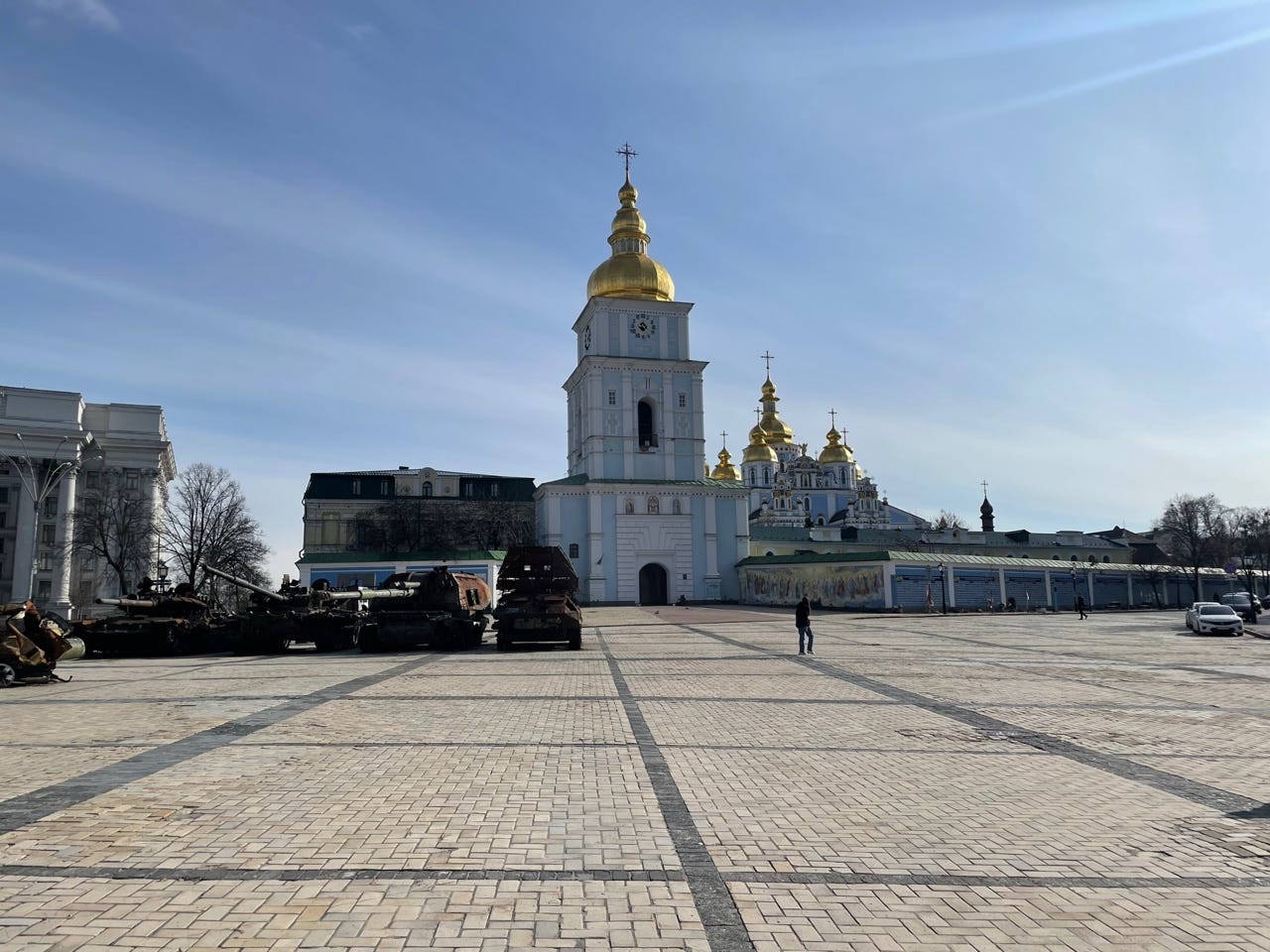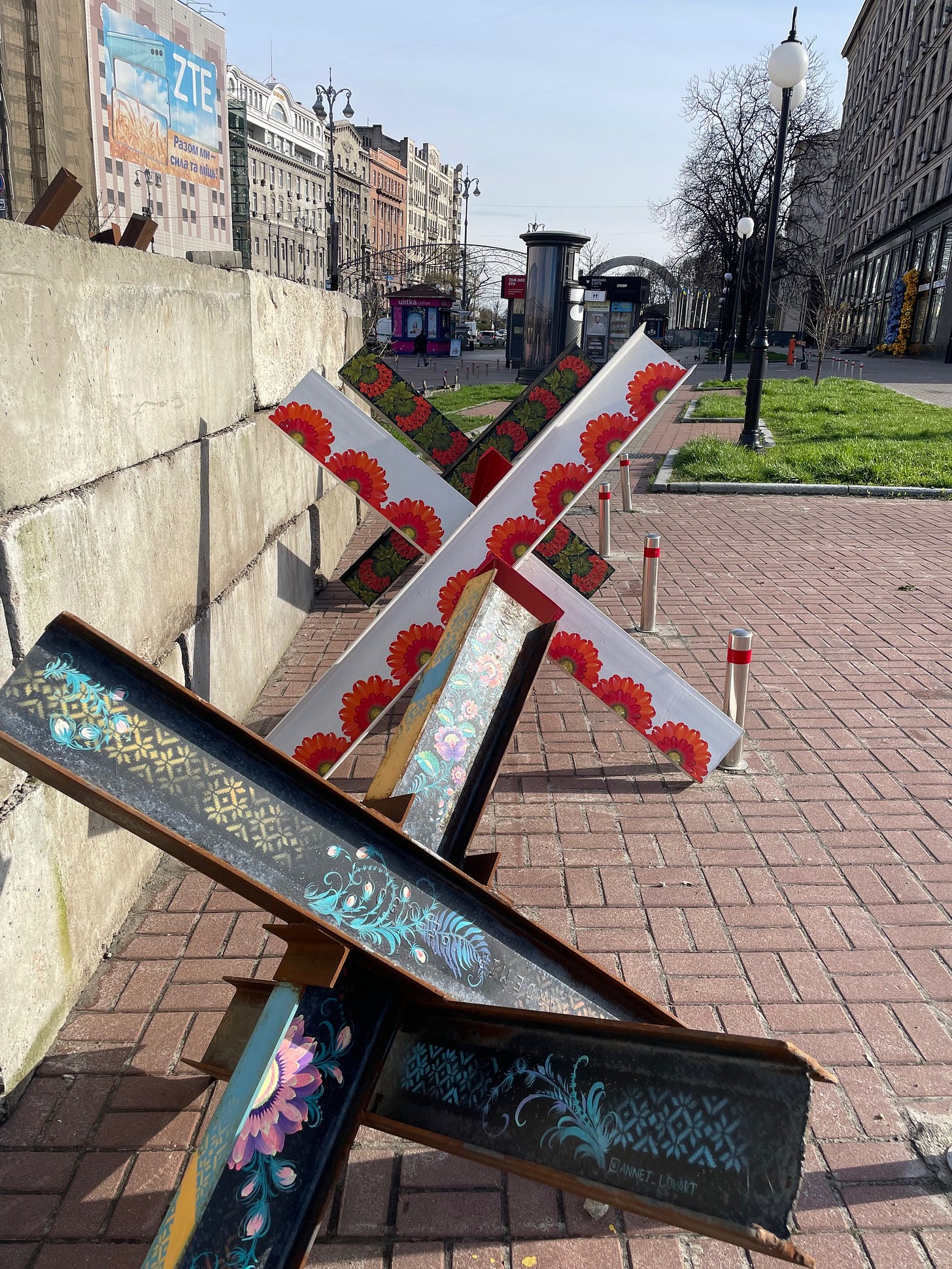Hi All, this is the second part of a running diary/commentary that I’ve been putting together since my trip to Ukraine. This entry will mostly be about a country and capitol at war. The last entry, next week, will be about looking around whilst I was there (sights, sounds, food etc). This entry will be particularly about how the Ukrainian state seems to be functioning at war, and how this has made be reconsider some of my own historical work on the subject.
A Modern City at War
When you arrive into Kyiv after the long drive from Poland, you are struck by how the ordinariness of life goes on, and yet the reality of being in the bloodiest war in Europe since 1945 is all around you.
This picture above is one of the central squares of Kyiv, and you can see the juxtaposition. The church and square are one of the most well-known in the country. St Michaels was a medieval Ukrainian masterpiece that was destroyed completely by the Soviets in the 1930s (one of their greatest architectural depredations—and there were many). The church was rebuilt in its entirety after Ukrainian independence, looks beautiful in the sun and people stroll through the square as if all is well. And yet, the war explodes on either side. To the left (of the picture) you can see the line of charred Russian war equipment that has been left as a silent tribute to Ukraine’s military prowess. Its completely open and unpatrolled, and (young, limber) people are free to clamber over the burnt and twisted metal, staring into the guts of wrecked kit of what was once considered the second most powerful army in the world.
The right of the picture is even more poignant. You might be able to make out along the low wall, lines and lines of pictures. These are of Ukrainian soldiers who have died defending Ukraine since 2014. The panels were already long enough until February 24, 2022. Since then, as the wall goes along, people have started posting pictures of soldiers that have been killed further along the wall. These memorials are not so symmetrical, but even more human, often with personal tributes. All along the wall people come to look at or even stroke the pictures of those that they have lost. I did not want to take a picture of that, as I considered it to be disrespectful of those who were experiencing a very personal moment, but it was the most moving thing I witnessed during a week of moving sights.
So Kyiv looks sometimes like a normal European capital, with trendy cafes, restaurants, theatres, etc, and yet its different. The war is inescapable and to be seen in small signs or large statements across the country. Of course, there is even some attempt to turn the whole experience of war into something else—a form of defiance perhaps. Kyiv, for instance, is so full of now unused anti-tank/anti-vehicle traps that they make up piles around the city. In some cases there are so many spare ones, that people are turning them into works of art.
Keep reading with a 7-day free trial
Subscribe to Phillips’s Newsletter to keep reading this post and get 7 days of free access to the full post archives.





